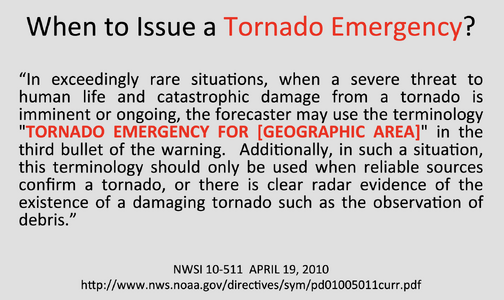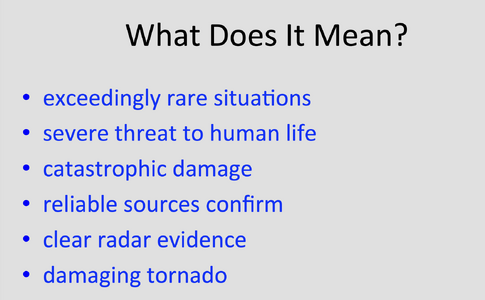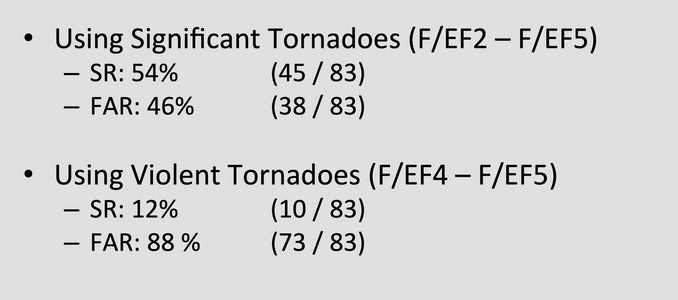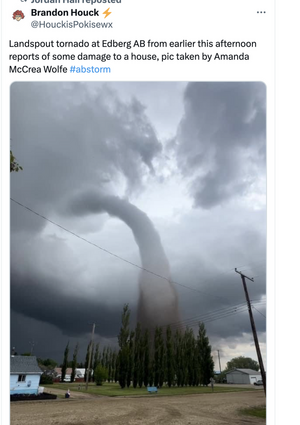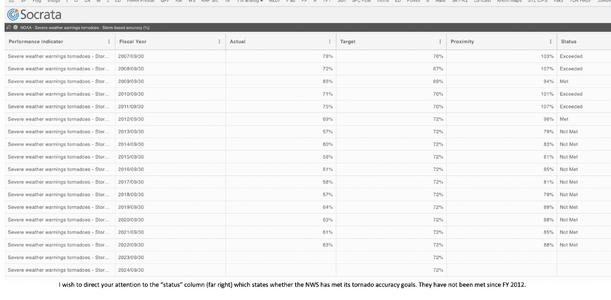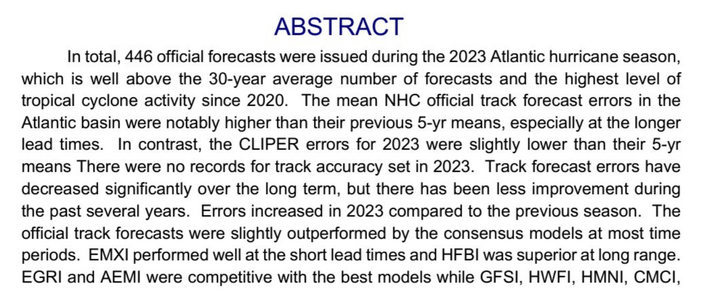Jason,
As calculated at that time, TOR lead-time was from when the warning was issued to the first report of the tornado on the ground. The average lead-time was a little more than 13 minutes which, per Kevin Simmons' research, is about perfect (beyond 15 minutes of lead-time, fatalities
rise). Now, it is eight minutes.
Here's an opinion on a related topic: dual-polarization has been a bust compared to how it was sold. That is for two reasons:
- There is a temptation to wait until there is a TDS to issue a tornado warning. That temptation didn't exist before. I know that in a least a few occasions, that accounted for a tornado warning delay. Look at Boris' chart (above). Issue an upgraded tornado warning after a TDS appears. At that point, you are issuing a tornado report rather than a warning. The TDS was intended to be a backstop at night but it was never intended to be a primary warning criterion.
- D-P was sold as making a revolutionary improvement in flash flood warnings because its rainfall calculations were supposed to be much better than single pole. While they probably are better, there are far too many times they are off the mark.
Remember, I wrote a book (published in 2010) full of praise for the NWS. I had no way of knowing that I was publishing at the very height of tornado warning accuracy.
We used to issue tornado warnings well. I believe we need an independent National Disaster Review Board (modeled after the NTSB) to help figure out how we can get at least back to where we were. In the meantime, we need to honestly confront the issue and -- where possible -- go back to the techniques that were so successful 15 years ago.
Addition at 9:38pm Tuesday: In my part of far northeast Wichita, the DP rainfall estimates are terrible this evening. KAAO (14.4 miles NE of KICT WSR-88D) has a DP estimate of 1.04 with the actual 1.20 inches and, it is known that the rain gauge at KAAO tends to read now for some reason.
At my house, we had over an inch and the radar estimated .76 inches.
There was no hail at either location (and, even if there was, DP is supposed to allow for it). It is not at all clear to me these are superior to the estimates in the pre-DP era.

